Keys to the successful design and construction of an accessible bathroom:
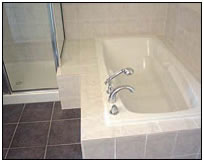
Figure 3 - Accessible bathtub faucets
To comfortably house the new fixtures, bathrooms have to be larger, which creates a secondary benefit. Larger bathrooms create larger open areas which in turn makes maneuverability for individuals needing the use of wheelchairs and walkers possible.
Maneuverability is critical for those that require mobility aids. However, added space is not always enough. In many cases it is necessary to consider the positioning of faucets in easily accessible locations, as shown in Figure 3, and the installation of additional safety devices such as grab bars beside toilets, bathtubs and on route to showers, as shown in Figure 4.
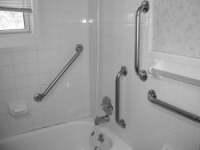
Figure 4 - Installation of grab bars for bathroom accessibility
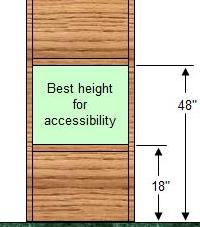
Figure 5 - Accessible height for bathroom cabinets
Besides grab bars it is important to consider the materials chosen for flooring. Many materials such as polished marbles, granite and ceramics become virtual skating rinks when wet. Using non-slip flooring, coupled with adequate lighting, is not only important for those with disabilities, but falls can happen to anyone.
Storage space, which in many bathrooms is only available beneath the basin in a vanity, can be difficult to access, especially if there is someone with disabilities. The most convenient storage space to access is between 18 inches and 48 inches, as shown in Figure 5.
When designing the bathroom, consider the use of towel bars, or towel shelves to hold towels in a location that is close and at a correct height to the bathtub and/or shower for easy access when wet.
If visitors will be using the bathroom access to hand towels, soaps and other essentials should be placed in locations that are obvious and rational. Visitors and guests should not have to hunt for essentials!
Locating the towels in an obvious location may seem to be basic common sense. There are some other small things that can be done to your bathroom in order to make it more accessible:
- Cabinet doors and drawers should utilize
D
style drawer pulls,as shown in Figure 6, as they are the easiest drawer pull to grip.
- Drawer slides
should allow drawers to open 100% (full extension).
- Install slides on shelving.
- Faucets, that are hands-free
, as shown in Figure 7.

Figure 6 - D
style cabinet door and drawer pull
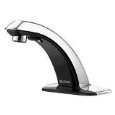
Figure 7 - Hands free faucet
- Resilient flooring materials.
- Motion activated switches
to control lighting, as shown in Figure 8
- Adjustable shower head mount
. as shown in Figure 9
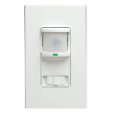
Figure 8 - Motion activated switch
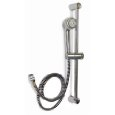
Figure 9 - Adjustable shower head mount
Creativity in adaptability:
Family and guest circumstances are all different and the size and physical shapes of bathrooms vary. In order to achieve adaptability, creative is often necessary. As examples:
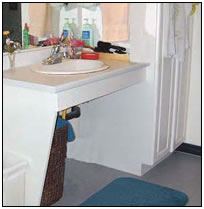
Figure 10 - Knee space under vanity
- To make a shower head’s height adjustable, a homeowner can install shower arms with heads that are attached to vertical slide bars, as shown in Figure 9, most are even removable making them handheld showers.
- Portable raised toilet seats can accommodate visitors who have difficulty in raising and lowering themselves in and out of low seating.
- Some grab bars are designed to fold out of the way, when not in use.
- If you have occasionally visitors who require knee space under vanities, the area can be utilized for storage when the knee space is not required as shown in Figure 10
